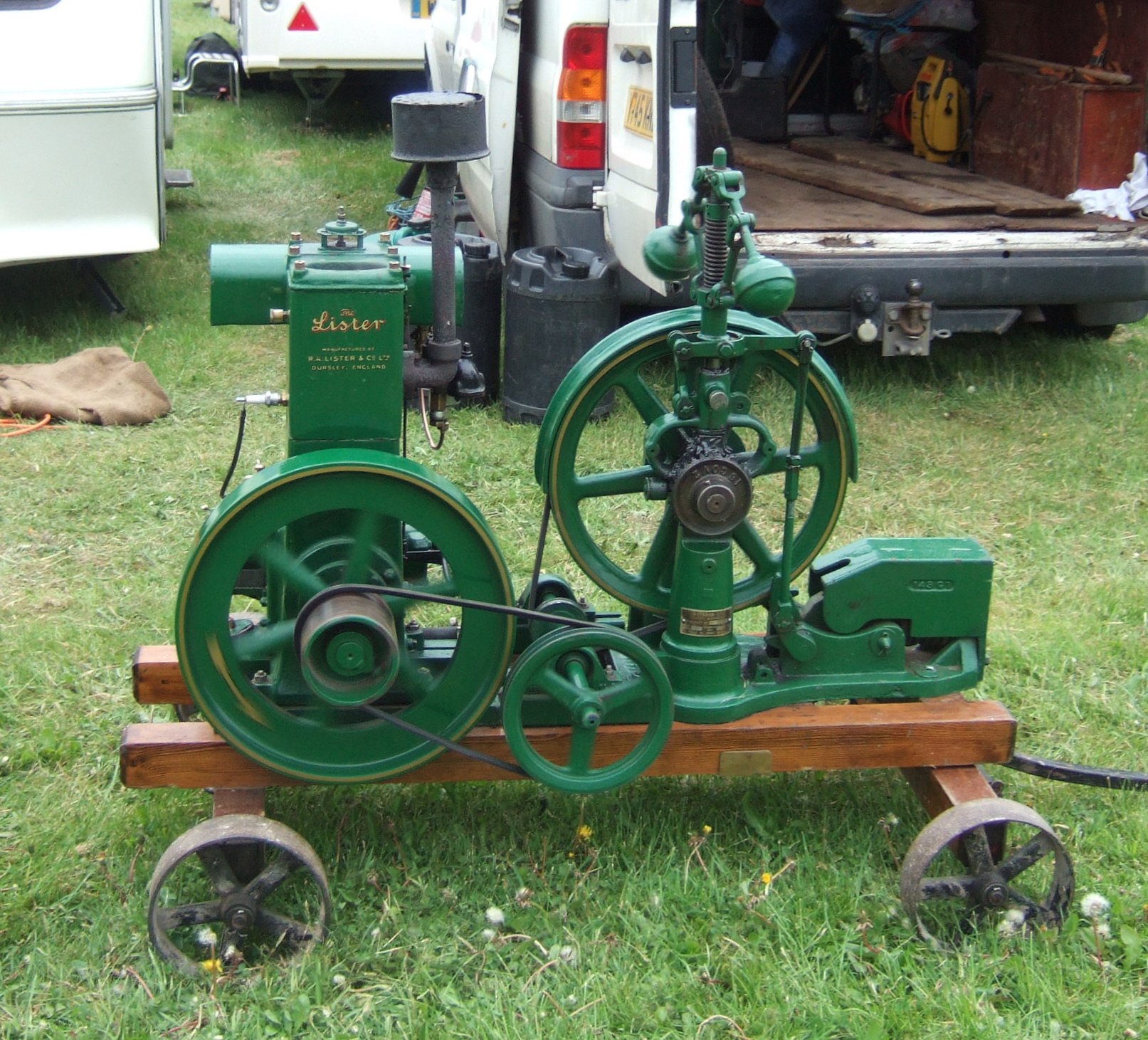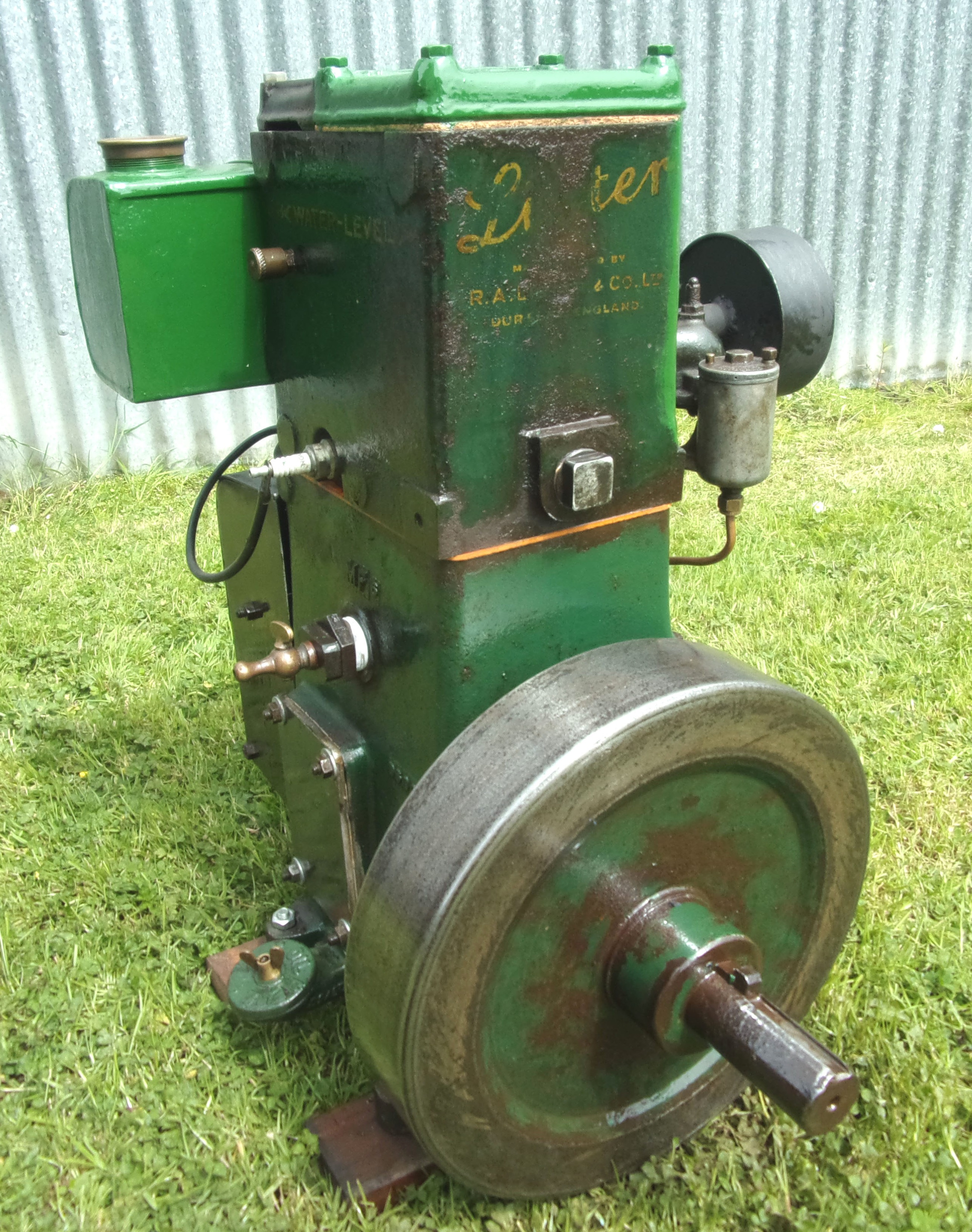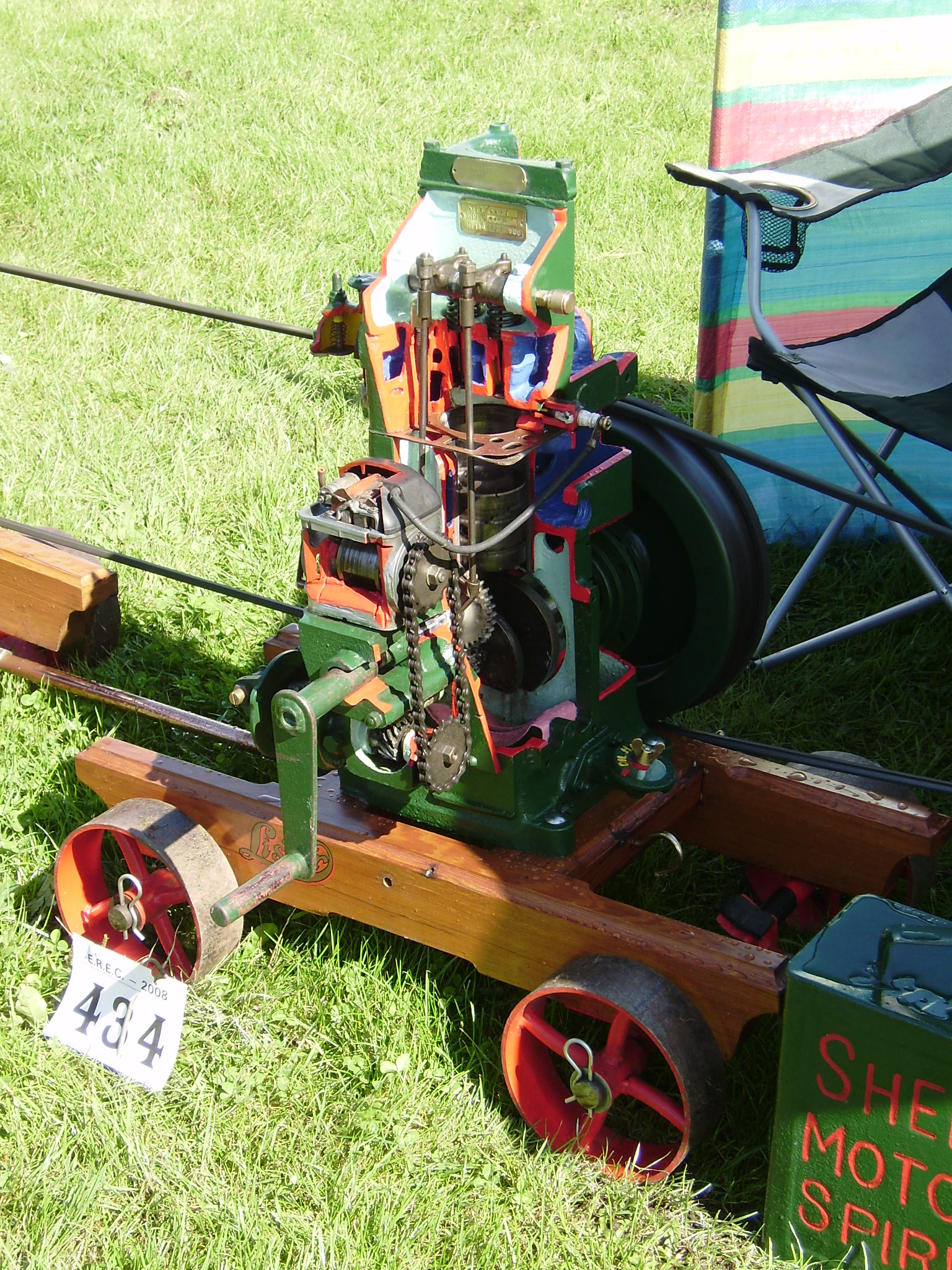Lister D on:
[Wikipedia]
[Google]
[Amazon]
 The Lister D is a 1.5 - 2.5hp
The Lister D is a 1.5 - 2.5hp 

 Throughout the years of production, the engine changed very little. The fuel tank was moved from halfway up the engine to the top, and the shaft-drive magneto was replaced by a chain-driven unit in the early 1930s. D's were originally painted mid Brunswick green, but some World War II engines were painted in olive drab. A paraffin-fuelled engine was also available, called the Lister DK. It had two separate tanks, one for paraffin, and another for petrol. The engine was started on petrol, but could cut over to
Throughout the years of production, the engine changed very little. The fuel tank was moved from halfway up the engine to the top, and the shaft-drive magneto was replaced by a chain-driven unit in the early 1930s. D's were originally painted mid Brunswick green, but some World War II engines were painted in olive drab. A paraffin-fuelled engine was also available, called the Lister DK. It had two separate tanks, one for paraffin, and another for petrol. The engine was started on petrol, but could cut over to
{{Commons category, Lister D engines, position=left Stationary engines
 The Lister D is a 1.5 - 2.5hp
The Lister D is a 1.5 - 2.5hp stationary engine
A stationary engine is an engine whose framework does not move. They are used to drive immobile equipment, such as pumps, generators, mills or factory machinery, or cable cars. The term usually refers to large immobile reciprocating engines, pr ...
on petrol or petrol/paraffin (fuel) built between 1926-1965 by R A Lister and Company
R A Lister & Company was founded in Dursley, Gloucestershire, England, in 1867 by Sir Robert Ashton Lister (1845–1929), to produce agricultural machinery.
History 1867–1906: Foundation and growth
The founder of R A Lister and Company w ...
of Dursley. It is popular with newcomers to the stationary engine hobby with un-restored examples available for as little as £100, plenty of spares and various re-manufactured parts and decals. It replaced the Lister H, which was of a similar output. The first Lister D engine serial number 80,000 was assembled on the 26th October, 1926.
The engines were used to power water pumps, generators, cement mixers and much more. They had a chain drive ignition magneto
An ignition magneto, or high-tension magneto, is a magneto that provides current for the ignition system of a spark-ignition engine, such as a petrol engine. It produces pulses of high voltage for the spark plugs. The older term ''tension'' ...
, either the Lucas SR1, the Lucas RS1 or a M-l MK1(shaft driven and early chain driven), and an Amal Amal may refer to:
* Amal (given name)
* Åmål, a small town in Sweden
* Amal Movement, a Lebanese political party
** Amal Militia, Amal Movement's defunct militia
* Amal language of Papua New Guinea
* Amal (film), ''Amal'' (film), 2007, directed ...
float bowl. The engines were made in 1 hp, 1.5 hp, 2 hp and 2.5 hp versions. It was known as the model D309 or simply the R.A. Lister. The engine was a 4 stroke
A four-stroke (also four-cycle) engine is an internal combustion (IC) engine in which the piston completes four separate strokes while turning the crankshaft. A stroke refers to the full travel of the piston along the cylinder, in either directi ...
poppet valve engine, and a simple centrifugal governing system.


paraffin Paraffin may refer to:
Substances
* Paraffin wax, a white or colorless soft solid that is used as a lubricant and for other applications
* Liquid paraffin (drug), a very highly refined mineral oil used in cosmetics and for medical purposes
* Alkane ...
by means of a 3-way tap.
The engine used clockwise rotation as a standard, but some Anti-clockwise engines were produced. While they were a very sturdy, reliable engine, they did have a few flaws, one of which was that the water tap poured water over the oil filler. This was easily corrected by the use of a rubber pipe.
The engine in the early days was a rival to the Ruston Hornsby Ruston may refer to:
Place names
;United States
* Ruston, Louisiana
* Ruston, Washington
;United Kingdom
* East Ruston, Norfolk, England
* Ruston, North Yorkshire, England
* Ruston Parva, East Riding of Yorkshire, England
Companies
* Ruston (e ...
PB, the Bamford EV1, the short-lived Fowler P seriesFurther reading
* David W. Edgington. ''The Lister D Story 1926-1964''. UK: self-published, 2004. 54p. * Nigel McBurney (edited by Gordon Wright). Stationary Engine ''on Lister D Type Restoration''. Kelsey Publishing, 1997. 68p.{{Commons category, Lister D engines, position=left Stationary engines